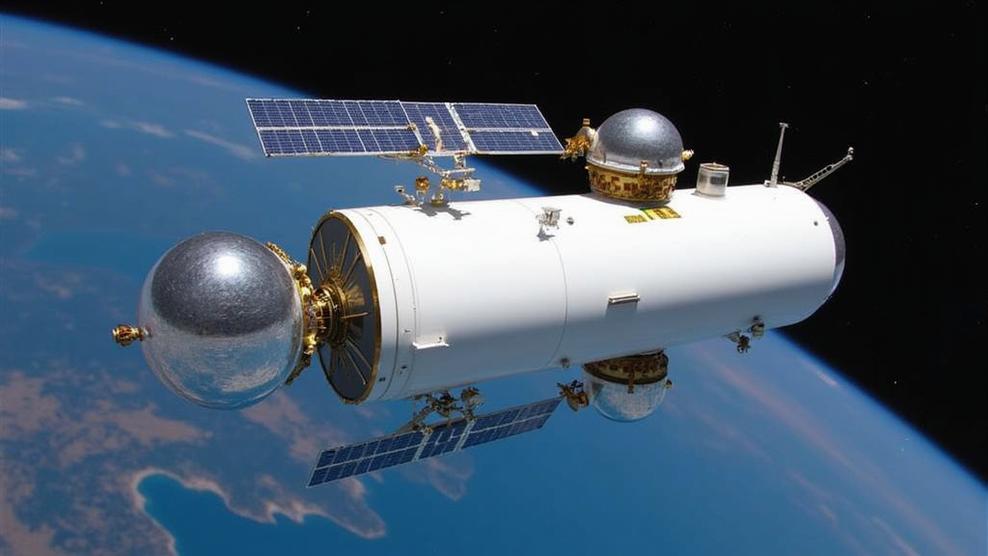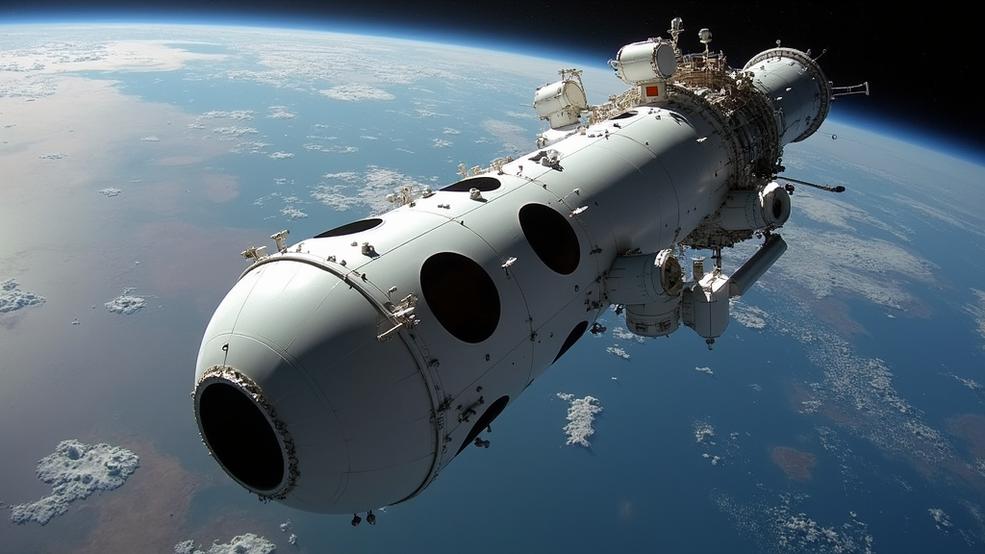Compton Gamma Ray Observatory: Launch Date, Mission, Discoveries
The Compton Gamma Ray Observatory was a space-based observatory launched by NASA on April 5, 1991. It weighed over 15 tons, making it the heaviest payload ever flown at the time. The observatory operated in a low Earth orbit at an altitude of 450 km for nine years until June 4, 2000.
Compton Gamma Ray Observatory’s mission was to study gamma-ray sources and high-energy radiation in the universe. It detected photons with energies ranging from 30 keV to 30 GeV, enabling comprehensive observations of high-energy phenomena. The observatory determined gamma-ray bursts and studied x-ray sources, contributing to a broader understanding of high-energy astrophysical processes.
Compton Gamma Ray Observatory made several groundbreaking discoveries during its mission. It detected over 2,700 gamma-ray bursts, providing compelling evidence about these extremely powerful and distant cosmic explosions. The observatory identified more than 400 new gamma-ray sources, including exotic objects like black holes and neutron stars. It discovered a new class of galaxies powered by supermassive black holes, named “blazars.” Gamma rays originating from thunderstorms on Earth were detected by the observatory.
Compton Gamma Ray Observatory no longer orbits Earth. It underwent controlled re-entry over the Pacific Ocean on June 4, 2000. The majority of the observatory’s debris burned up during re-entry, marking one of the first intentional de-orbiting events in space history.
What is a Comptom Gamma Ray Observatory?
Compton Gamma Ray Observatory was a space-based observatory launched by NASA on April 5, 1991, aboard the Space Shuttle Atlantis. The observatory, weighing over 15 tons, was the heaviest payload ever flown at the time and operated in a low Earth orbit at an altitude of 450 km. Compton Gamma Ray Observatory featured four main telescopes (BATSE, OSSE, COMPTEL, and EGRET) designed to detect gamma rays from various astrophysical sources across a wide energy range from 30 keV to 30 GeV. The observatory detected over 2,700 gamma-ray bursts during its nine-year mission, producing a comprehensive map of the sky showing gamma-ray emissions from various sources. Compton Gamma Ray Observatory’s discoveries and observations greatly advanced our understanding of the high-energy universe until its deorbit on June 4, 2000.
The Compton Gamma Ray Observatory mission lasted for nine years until June 4, 2000. Kurfess et al. (1994) outlined the mission’s goals to create a comprehensive catalog of gamma-ray sources and advance understanding of the universe in the gamma-ray energy range. The spacecraft weighed over 17,000 kilograms and measured 9 meters in length, making it the largest astrophysical payload ever flown at the time, as noted by Kanbach et al. (1993).
The Compton Gamma Ray Observatory spacecraft carried four main instruments: BATSE, OSSE, COMPTEL, and EGRET. These instruments detected gamma rays in the energy range from 20 keV to 30 GeV, providing complementary capabilities for studying gamma-ray sources, as explained by Thompson et al. (1993). The instruments provided high-resolution spectroscopy and imaging of gamma-ray sources, enabling groundbreaking discoveries during its mission. Fishman et al. (1994) documented the spacecraft’s detection of gamma-ray bursts from distant galaxies, while other discoveries included high-energy emission from active galactic nuclei and insights into supernovae explosions and neutron star magnetospheres.
When was Comptom Gamma Ray Observatory launched into space?
NASA launched the Compton Gamma Ray Observatory on April 5, 1991. Space Shuttle Atlantis carried the observatory from Kennedy Space Center in Florida. The Space Shuttle deployed the Compton Gamma Ray Observatory on April 11, 1991, six days after launch. Compton Gamma Ray Observatory orbited at an altitude of 280 miles (450 kilometers) above Earth’s surface. The observatory weighed approximately 16 tons, making it one of the heaviest scientific payloads launched by the Space Shuttle at that time.

What is the mission of Comptom Gamma Ray Observatory?
The Compton Gamma Ray Observatory’s mission was to study gamma-ray sources and high-energy radiation in the universe. NASA launched the observatory in 1991 to explore the gamma-ray sky with unprecedented sensitivity. The spacecraft detected photons with energies ranging from 30 keV to 30 GeV, enabling comprehensive observations of high-energy phenomena.
Primary objectives of the mission included studying the gamma-ray sky, exploring gamma-ray sources, and understanding universe structure through gamma-ray observations. Scientists used the observatory to perform spectroscopic and timing studies of gamma-ray sources, advancing our knowledge of these energetic phenomena. The Compton Gamma Ray Observatory determined gamma-ray bursts and studied x-ray sources, contributing to a broader understanding of high-energy astrophysical processes.
Key activities of the mission involved detecting high-energy photons and gamma-rays from various cosmic sources. The Burst and Transient Source Experiment on board detected over 2,700 gamma-ray bursts during the mission’s lifetime. The Energetic Gamma Ray Experiment Telescope identified more than 250 gamma-ray sources, significantly expanding the catalog of known high-energy emitters in the universe.

What did Comptom Gamma Ray Observatory discover?
The discoveries of Compton Gamma Ray Observatory are listed below.
- The Compton Gamma Ray Observatory discovered a new class of galaxies powered by supermassive black holes, named “blazars.”
- Compton Gamma Ray observatory detected gamma rays originating from thunderstorms on Earth.
- Compton provided compelling evidence about gamma-ray bursts, extremely powerful and distant cosmic explosions.
- Compton observatory detected over 400 new gamma-ray sources, including exotic objects like black holes and neutron stars.
- Compton recorded over 2,500 gamma-ray bursts, advancing understanding of these mysterious phenomena.
- Compton Gamma Ray observatory made groundbreaking observations across a wide energy range, spanning from 20 keV to 30 GeV.
Compton Gamma Ray Observatory discovered gamma-ray bursts from massive star collapses and neutron star mergers. Distant quasars emitting gamma rays provided evidence for supermassive black holes. New pulsars were identified in the Milky Way and globular clusters. Blazars, a new class of gamma-ray sources, were detected. Black hole binary systems and galactic centers showed gamma-ray emissions.
Compton provided compelling evidence about gamma-ray bursts, extremely powerful and distant cosmic explosions. Meegan et al. (1992) investigated these bursts, which ranked among the most energetic events in the universe. The observatory detected over 400 new gamma-ray sources, 10 times more than previously known. Mushotzky et al. (1993) studied these unknown sources, which included exotic objects like black holes and neutron stars.
The observatory recorded over 2,500 gamma-ray bursts, advancing understanding of these mysterious phenomena. Kouveliotou et al. (1993) analyzed gamma-ray flashes from neutron stars and black holes. Compton made groundbreaking observations across a wide energy range, spanning from 20 keV to 30 GeV. Dermer et al. (1995) studied streaming black holes emitting high-energy particles, contributing to the observatory’s revelations about an energetic and violent universe previously unseen.
Where is Comptom Gamma Ray Observatory located today?
Compton Gamma Ray Observatory no longer orbits Earth. Observatory ceased operations on June 4, 2000. Observatory underwent controlled re-entry over Pacific Ocean. Majority of debris burned up during re-entry. Observatory disintegrated over Pacific Ocean. Re-entry marked one of first intentional de-orbiting events, highlighting responsible space debris management.
